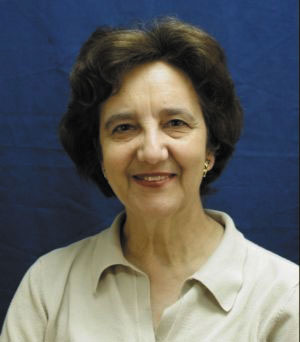SLU professor on new book about Sephardic Jews
Published March 23, 2011
Julia R. Lieberman, who is a professor of Spanish and International Studies at St. Louis University, is both editor and contributor to the recently published book “Sephardi Family Life in the Early Modern Diaspora” (Brandeis University Press, $24.99). The book was largely completed when Lieberman was a Scholar-in-Residence at the Hadassah-Brandeis Institute – which publishes a wide-range of books by and about Jewish Women – during the 2008 spring term.
Lieberman was born in Spain and came to the United States in the 1970s. She received her doctorate from Yale University in Spanish and Latin American Literature. At SLU, Lieberman teaches Spanish language and literature and two other courses: “Jews of Spain and Portugal Before and After the Expulsion” and “Israeli Culture from the Birth of Zionism to the 21st Century.”
The term Sephardi derives from a place name in biblical Hebrew, which, since medieval times, has referred to Spain. As the co-director of Hadassah-Brandeis Institute writes in the foreword, this book on the experience of Sephardi Jews after 1492 addresses a subject that has been “as remote and unknown as the dark side of the moon.” This book provides information about two groups of Sephardi Jews: those who were expelled from the Iberian Peninsula in 1492 and founded Sephardi Jewish communities in the Ottoman Empire and a second group of émigrés who began to settle in Livorno, Italy and European communities of the Atlantic seacoast-Amsterdam and Hamburg-at the turn of the 17th century. Remarkably, this second group after several generations as “crypto-Jews” who practiced secretly and with limitations, re-embraced Judaism in the place of their newly adopted residence.
The studies included in the book draw information from: court, case records, wills, rabbinic opinion, letters, memoirs, and sermons. They reveal details of marriage and courtship, “children born and named in the synagogue and those born out of wedlock and deprived of [inheritance],” marriage between relatives (for instance, uncles and nieces) to keep wealth within the family, conflicts about traditions between established Jews (as for instance, the Greek-speaking Romaniots) and the more lately arrived Sephardim.
Recently, the Jewish Light caught up with Lieberman to discuss her work at SLU and her recently published book.
People use the term “Sephardi” very loosely?
That’s true. In Israel, Sephardi has been used to mean anyone who was not of Ashkenazi decent, meaning not of the Yiddish-speaking, European Jews. But some people make a distinction, using Sephardi to mean Jews with Spanish ancestry, while the Jews from the Arab lands are now being described as Mizrakhi.
Around 1992, the 500-year anniversary of the Spanish Inquisition, I remember hearing “Marranos” for the Jews who secretly practiced Judaism. But that word is not in your book.
That’s right. We use: New Christians, conversos or crypto-Jews. The word Marrano, which means pig, is a reference to the outward disregard for traditional Jewish dietary laws. It has a derogatory connotation, which we wanted to avoid.
I was amazed that the people described in the book left the Iberian Peninsula, and even after having been New Christians for several generations, they returned to a more traditional practice of Judaism. Did you find that surprising as well?
Yes, it was the women who preserved Jewish observance within the family. But they had to be very careful because even one’s own child might inform on a parent. Sometimes, for safety, families would tell only one child about their Jewish roots. And then, even in new locales, the Sephardis would often continue to practice their religion with a degree of secrecy. For instance, in one case, a rabbi warned against large, luxurious celebrations, which might incite the Christians. In Amsterdam, the Jews were free to practice openly only some time after they arrived. Then they built the Portuguese Synagogue in the late 1600s. It survived the Nazi occupation and any passerby can give directions to visitors. As an ironic footnote: In 19th century Amsterdam, many Sephardim converted to Christianity. Still, the original return to Judaism was a collective miracle.
In the essay which you yourself contributed to the book, you write about the “Thesovro dos dinim”(Treasury of Jewish Laws) published in 1647 by Rabbi Menasseh Ben Israel. Did you consult an original copy of the book?
Yes. All my sources were from the 17th century. The “Thesovro” was a printed book, but I also studied handwritten manuscripts.
It is outside of the scope of the book, but what would you say about the Sephardi experience in the United States?
When the Sephardim came here (and to Mexico) from the Ottoman Empire they were rejected by the Ashkenazi majority. The Sephardim didn’t speak Yiddish. Their dress was different and not modern. Today, in Seattle and New York, places where Sephardi Jews found meager welcome from other Jewish groups, there are independent and active Sephardi communities.















